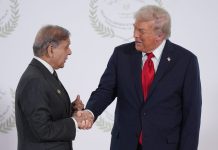The sale of 30 Rafale fighter jets by France to Egypt in a deal reportedly worth €3.9 billion has raised eyebrows in India. Earlier, France and India had signed a pact for 36 Rafale jets in 2016, which was signed at twice the rate of €7.8 billion.
The Egyptian President Abdel Fattah el-Sissi is said to have signed the deal on April 26 as part of defense contracts worth almost four billion euros, investigative website Disclose claimed.
While around €3.75 billion was for the purchase of 30 Rafale jets from Dassault, the rest was used to sign deals with MBDA and Safran Electronics and Defense for the sale of missile equipment.
According to Disclose, Egypt is seeking a loan guaranteed by France for making the aircraft purchases, which is to be repaid over the next 10 years. The country was the first to buy 24 Rafale jets, in 2015. This is the second Rafale deal that Egypt has signed with France in five years.
In 2016, India, looking to modernize its Soviet-era fleet, signed an agreement with France to buy 36 twin-engine Rafale fighter jets for €7.8 billion.
There has been relentless criticism on social media about India procuring the aircraft at very high rates at €216 million per aircraft, while under the latest deal Egypt got it only for €125 million per aircraft (€3.75 for 30 aircraft).
The question has been asked before but it needs to be asked again. Why did the Govt scrap the earlier deal for 126 Rafales & buy 36 at an inflated price? Why is India paying so much more than Egypt & Qatar for the same aircraft? What embellishments justify doubling the price? pic.twitter.com/bQkkD8siy9
— Shashi Tharoor (@ShashiTharoor) May 4, 2021
The 4.5 generation Rafale jets are employed by the air forces of Egypt, Qatar, France, and now Greece, and give them considerable air superiority over their adversaries.
However, the ones exported to India are considered an edge above the rest. As reported by EurAsian Times earlier, France has made special additions to the standard Rafales as per the requirements laid down by the IAF which helped Dassault Aviation clinch the deal.
The Indian Rafales come with certain critical capabilities not offered to other countries, such as the ‘Hammer’ precision-guided munitions, advanced navigation systems, helmet-mounted sights and targeting systems, cold engine start capability to operate from high-altitude bases including Leh, radar warning receivers, flight data recorders with storage for 10 hours of data, infrared search and track systems, and many such enhancements.
Moreover, according to the Indian government, the IAF had sought some 13 India Specific Enhancement (ISE) capabilities to be incorporated in the Rafale aircraft.
“If you look at the first Egyptian Rafale deal signed in 2015 worth €5.2 billion, for 24 aircraft, the cost per aircraft works out to be around €216 million per unit. That is exactly the price that India got its first tranche of 36 Rafales for,” Abhijit Iyer-Mitra, a senior fellow at the Institute of Peace and Conflict Studies, told The EurAsian Times,
“The first tranche is always more expensive than the second because during the first tranche, you purchase training, maintenance, the ground equipment required to support the aircraft, among other things. India got the same price as Egypt in the first tranche, even though it got at least five India specific modifications added on to it, plus it got a much longer five-year servicing and maintenance package as opposed to standard two that Egypt got,” he adds.
They got it cheap the second time because they don’t have to buy any additional things – they have got all the training and ground equipment in-house. Once you have set up the basic infrastructure, it’s easy, he adds.
“Think of it as setting up a factory. You have got X amount of demand when you decide to set up a factory. You have to buy the land, then you have to put up the actual factory housing, you have to hire the labour, do the training, and a whole lot of other things.
But when you have to expand the capacity, you just have to buy more machines, then the training cost also becomes cheaper because you are not training ab initio, you are getting more staff, making them man that new thing and there’s already a trained core in-house to do the training. You don’t have to send them for external training anymore to the manufacturer. So, it’s always much cheaper,” he says.
Iyer cites the example of Qatar, whose first batch of F-15s cost a lot more than their second batch of F-15s. He says this has always been the standard everywhere. “You look at piecemeal procurements, first batches are always much more expensive than second batches,” he adds.
Qatar and France had signed a whopping €6.3 billion agreement for the sale of 24 Dassault Aviation-built Rafale fighter jets in 2015. However, the contract included the sale of MBDA missiles and the training of 36 Qatari pilots and 100 technicians by the French military.
Air Marshal Anil Chopra (retd) agrees with the assessment, saying the second tranches don’t need the setting up of infrastructure for training, testing labs, and other equipment. He also says the Indian Rafales had numerous modifications as per the IAF requirements.
IAF pilot Vijainder K Thakur told the EurAsian Times that the additional costs could also be software-related.
“In a modern fighter, software costs can be as much as 60% of total costs. The IAF will have access to source code that will allow customization of weapon fit, displays, EW algorithms, threat evaluation, etc. It’s unlikely that Egypt will have similar source code access at their purchase price.”
He says that sensor software in a fighter aircraft can cost more than 80 percent of the sensor cost itself. “Sensor fusion is 100 percent software,” he adds.
This year in January, Greece also signed a deal worth €2.5 billion with Dassault to buy 18 Rafale aircraft after the country’s parliament approved the decision. However, 12 of the aircraft involved in the deal are second-hand and will be supplied from the inventories of the French air force, while the rest 6 will be delivered from July 2021.
Follow EurAsian Times on Google News




